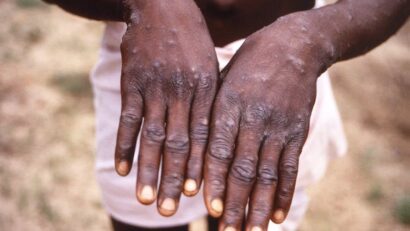
Lassa fever case in Paris: what you need to know
A case of Lassa fever has been reported in Paris, France, sparking lurid warnings about the “horrific Ebola-like bug”.
So what is Lassa fever and are comparisons with Ebola fair?
Lassa virus (Lassa mammarenavirus) belongs to the Arenaviridae family and there are eight species of this family known to infect humans. What makes this group of viruses noteworthy are their relatively recent emergence as threats to human health (the first case was in Lassa, Nigeria, in 1969), the severity of disease they cause, and the fact that they are mostly transmitted to humans by rodents. And where you find people, you invariably find rodents.
As the name suggests, Lassa fever causes a high temperature, but also weakness, headache and “malaise” (a general ill feeling). These rather commonplace symptoms mean that cases are often misdiagnosed and are sometimes confused with malaria, which can mean worse outcomes for the patient and also more time for the virus to spread to other people.
While many people infected with Lassa virus experience no symptoms, in about 20% of infected people, more serious symptoms develop. These include encephalitis (swelling of the brain), shock and bleeding from the gums, eyes and nose.
About 1% of people who catch Lassa fever die. Although this figure is significantly higher in women in the last trimester of pregnancy.
Although there is no cure for Lassa fever, if a general (“broad spectrum”) antiviral such as ribavirin is given early enough, it can be quite effective at preventing serious disease. A Lassa fever vaccine is currently in phase 2 clinical trials – the penultimate phase of testing in humans.
Difference to Ebola
Lassa virus is often likened to Ebola because of the similar symptoms, but they are very different.
While many people have heard of Ebola and high-profile imported cases into non-endemic regions, such as Europe and North America, Lassa fever is relatively unheard of. Although both of these viruses are endemic to west Africa and can result in many of the same symptoms in people, an important difference is how they are transmitted.
Ebola virus is primarily transmitted from one person to another by body fluids such as sweat, spit, semen and blood. In other words, you’ve got to come into contact with infected fluids and these have then got to gain entry through a cut, by ingestion or, occasionally, sex.
Lassa virus, on the other hand, is almost always transmitted by rodents, in particular the common African rat (Mastomys natalensis).
It is now understood that Lassa fever is transmitted by these rodents when people accidentally ingest rat excrement or urine. It is also likely that dried rat urine or faeces containing the virus can act as a source of infection when it is inhaled, for example, when sweeping out a grain store.
Even more concerning, it has been found that other rodent species, such as the common rat (Rattus rattus) and the pygmy mouse (Mus baoulei) can also become infected with Lassa virus.
While the main animal reservoir has long since shown to be the common African rat, it is concerning that there is potential for other rodent species, especially those widely found on other continents, such as the common rat, to also act as carriers of this virus.
A Nigerian Security and Civil Defence Corps official sprays a woman’s hand with hand sanitiser during a Lassa fever outbreak.
NurPhoto SRL/Alamy Stock Photo
Another virus that is also endemic to Africa, mpox, has gained traction in spreading from person to person. We know this because the virus has distinctly evolved over the last seven years and spread to large numbers of people around the world, resulting in a “public health emergency of international concern” in July 2022.
Similarly, the number of reported outbreaks of Lassa fever in Africa has also increased, with almost yearly outbreaks reported in Nigeria. Unsurprisingly, we are now also seeing imported cases of Lassa fever elsewhere, such as the UK (2022) and Europe (2019, 2024).
An increase in the number of cases could result in a virus that transmits more easily from person to person as it has more chance to adapt, or a virus that can infect different rodent reservoirs if it establishes itself in other communities.
Add the complications of delayed diagnosis of Lassa virus in the community and climate change driving changes to rainfall patterns potentially altering the distribution of rodent species into a more urban environment, Lassa virus is another pathogen threat that needs to be carefully monitored. Läs mer…
